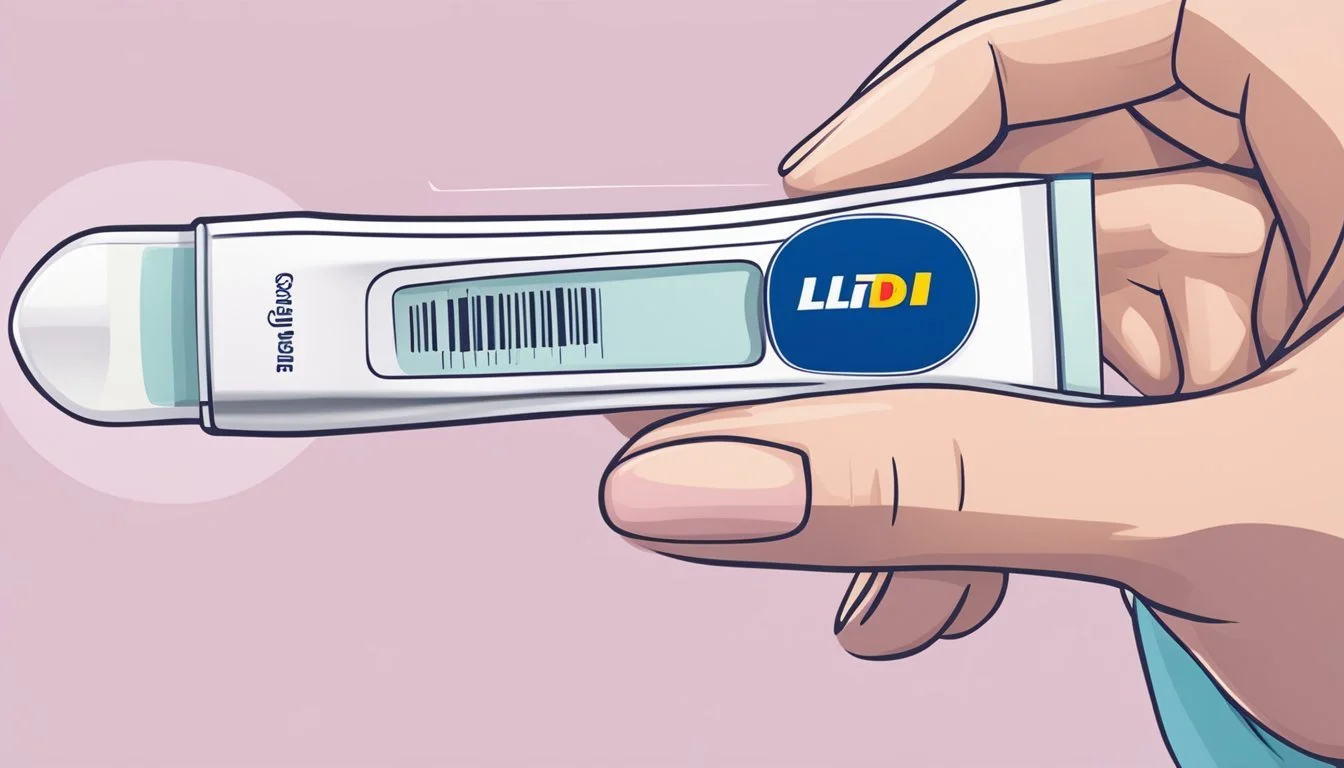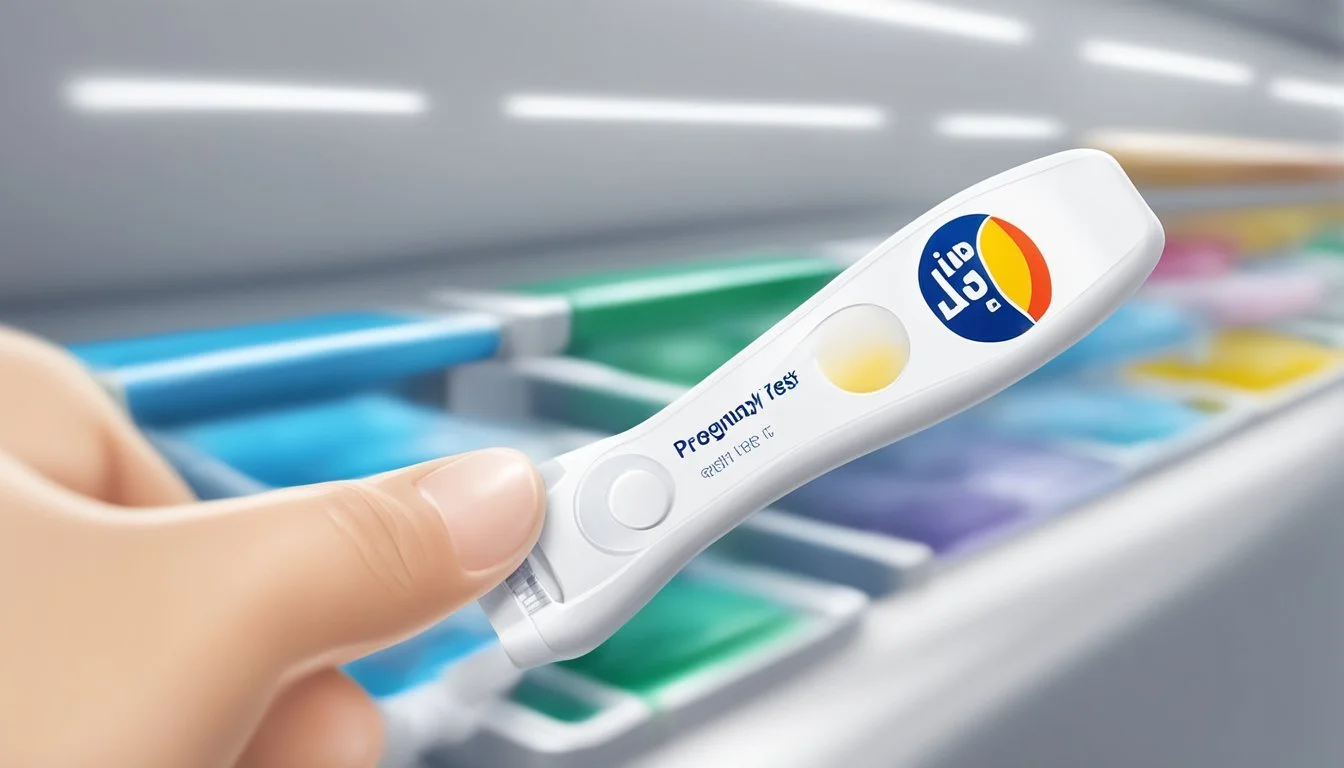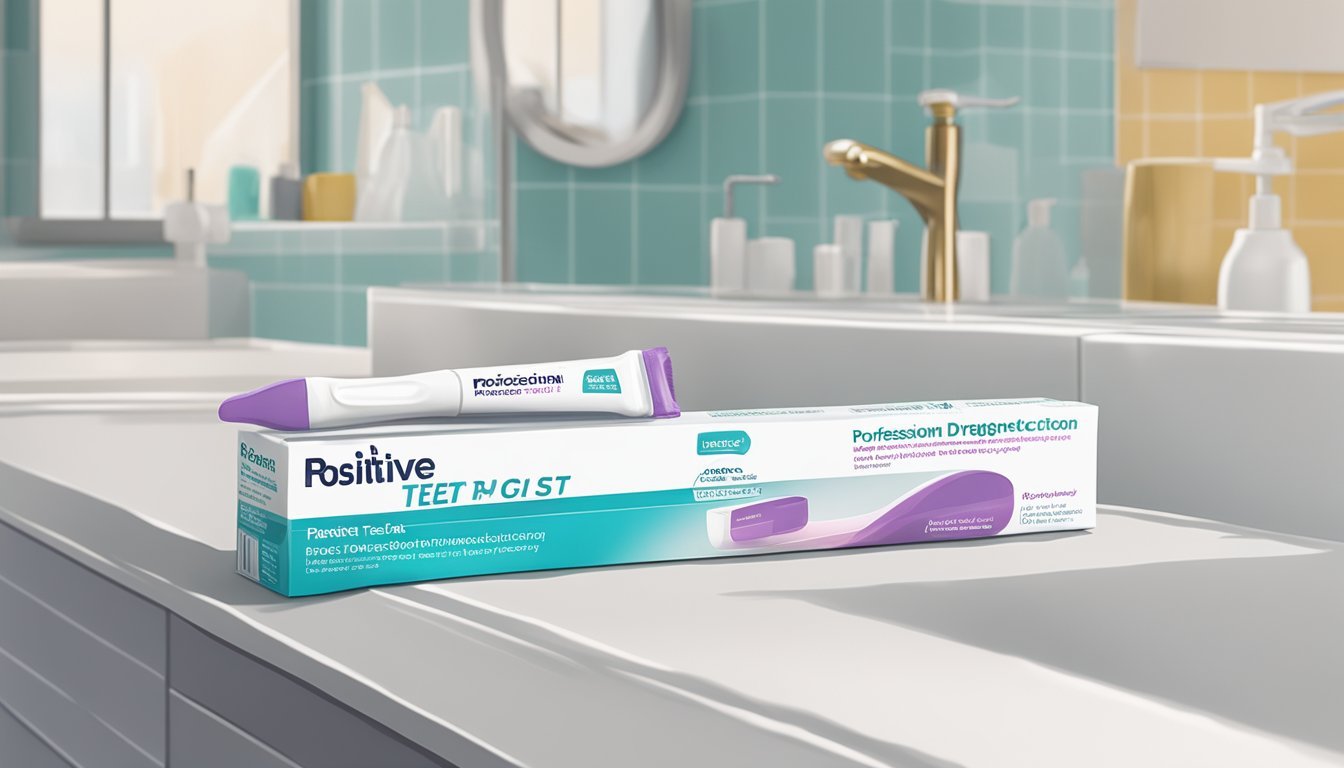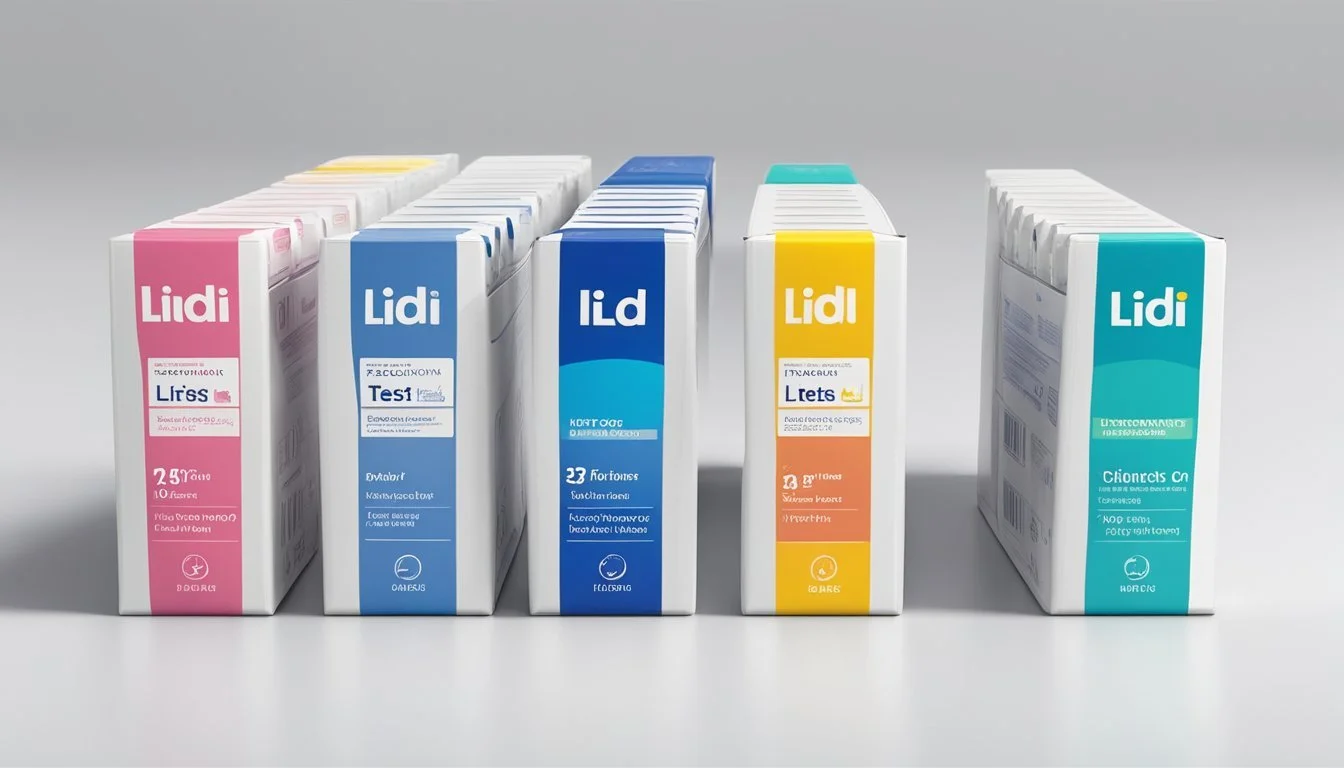Lidl Pregnancy Test
Affordable and Reliable Option for Early Detection
Lidl, the popular discount supermarket chain, offers a wide range of products at affordable prices. Many shoppers wonder if pregnancy tests are among the items available at Lidl stores. Lidl does sell pregnancy tests in most of their locations, providing a budget-friendly option for those needing to check for pregnancy.
These tests work similarly to those found in pharmacies and other stores, detecting the presence of human chorionic gonadotropin (hCG) hormone in urine. The accuracy of Lidl pregnancy tests is comparable to more expensive brands when used correctly. Users should carefully follow the instructions provided with the test to ensure reliable results.
For those seeking a cost-effective way to determine pregnancy status, Lidl's tests offer a convenient solution. The availability of these tests in Lidl stores makes them easily accessible to customers during their regular shopping trips, eliminating the need for a separate visit to a pharmacy or specialty store.
Understanding Pregnancy Tests
Pregnancy tests detect the hormone human chorionic gonadotropin (hCG) to determine if a woman is pregnant. They come in different types and sensitivities, allowing for early detection of pregnancy.
The Basics of Pregnancy Tests
Pregnancy tests work by detecting hCG in urine or blood. This hormone is produced shortly after a fertilized egg attaches to the uterine lining. Most tests can detect pregnancy as early as the first day of a missed period.
Home pregnancy tests are approximately 97% accurate when used correctly. For best results, women should follow the instructions carefully and test first thing in the morning when urine is most concentrated.
False negatives can occur if the test is taken too early. False positives are rare but can happen due to certain medications or medical conditions.
Types of Pregnancy Tests
There are two main types of pregnancy tests: urine tests and blood tests.
Urine tests:
Available over-the-counter
Provide quick results (usually within minutes)
Can be done at home
Affordable (typically $7.99 to $19.99)
Blood tests:
Performed at a doctor's office or clinic
Can detect pregnancy earlier than urine tests (7-10 days after ovulation)
Results take 2 hours to 2 days
More sensitive than urine tests
Some brands, like First Response, claim to detect pregnancy up to six days before a missed period. However, testing this early may lead to less accurate results.
The Role of Hormones in Pregnancy Detection
Hormones play a crucial role in detecting pregnancy. Specific hormones increase rapidly after conception, allowing for early and accurate identification of pregnancy through various testing methods.
Human Chorionic Gonadotropin (HCG) Essentials
HCG is the primary hormone used in pregnancy detection. Produced by cells that form the placenta, HCG levels rise quickly after implantation. This hormone supports the corpus luteum, maintaining progesterone production essential for early pregnancy.
HCG can be detected in urine and blood tests. Blood tests are more sensitive, potentially identifying pregnancy as early as 10 days after conception. Urine tests, commonly used in home pregnancy kits, typically detect HCG about 12-14 days after conception.
The presence of HCG in the body is a strong indicator of pregnancy. Its levels typically double every 48-72 hours in early pregnancy, providing valuable information about pregnancy progression.
HCG Levels and Pregnancy Verification
HCG levels vary throughout pregnancy and between individuals. In early pregnancy, levels can range from 5-50 mIU/mL at 3 weeks to 5,000-200,000 mIU/mL at 10 weeks.
Quantitative blood tests measure exact HCG levels, while qualitative tests simply confirm its presence. Home pregnancy tests are qualitative, providing a "yes" or "no" result based on HCG detection in urine.
False negatives can occur if tests are taken too early. For accurate results, it's best to wait until after a missed period. Some tests claim to detect pregnancy earlier, but their accuracy may be lower.
HCG levels can also indicate potential issues. Unusually high or low levels might suggest multiple pregnancies or potential complications, requiring further medical evaluation.
How to Use Lidl Pregnancy Tests
Lidl pregnancy tests offer a convenient and affordable option for detecting pregnancy. Using these tests correctly ensures accurate results and helps avoid false negatives.
Step-by-Step Instructions
Open the Lidl pregnancy test package and remove the test stick. Check the expiration date before use. Collect your urine sample in a clean, dry container. Dip the absorbent end of the test stick into the urine for 5-10 seconds. Alternatively, hold the stick in your urine stream for 5-10 seconds.
Place the test on a flat surface with the result window facing up. Wait for the recommended time specified in the instructions, typically 3-5 minutes. Do not read the results after 10 minutes, as this may lead to inaccurate interpretation.
Interpreting Test Results
Lidl pregnancy tests usually display results using lines or symbols. A single line or control line indicates a negative result. Two distinct lines, even if one is faint, suggest a positive result. If no lines appear, the test is invalid and should be repeated.
For digital tests, "Pregnant" or "Not Pregnant" will appear on the display. If unsure about the results, wait 48 hours and test again. Early testing may lead to false negatives, so it's best to test after a missed period for more reliable results.
Consult a healthcare provider to confirm pregnancy and discuss next steps.
Ensuring Accurate Results
Pregnancy test accuracy depends on several key factors and the sensitivity of the test being used. Understanding these elements can help maximize the reliability of results.
Factors Affecting Test Accuracy
Timing is crucial for accurate pregnancy test results. Taking the test too early can lead to false-negative results. Most tests are most reliable from the first day of a missed period. Using first-morning urine provides the highest concentration of hCG for detection. Waiting at least 4 hours without urinating before testing is an alternative if morning testing isn't possible.
Following instructions precisely is essential. Reading results within the specified timeframe prevents misinterpretation. Expired tests may produce inaccurate results, so always check the expiration date. Certain medications containing hCG can cause false positives, while others may interfere with results.
The Importance of Test Sensitivity
Test sensitivity refers to the minimum amount of hCG a test can detect. More sensitive tests can detect pregnancy earlier. However, higher sensitivity may also increase the chance of detecting very early miscarriages that might otherwise go unnoticed.
Lower sensitivity tests reduce false positives but may not detect pregnancy as early. Some tests claim to detect pregnancy up to 6 days before a missed period, but accuracy improves closer to or after the expected period date.
Test brands vary in sensitivity. First Response is known for high sensitivity and early detection capabilities. Choosing a test with appropriate sensitivity for your needs can improve result reliability.
When to Take a Pregnancy Test
The timing of a pregnancy test is crucial for accurate results. Proper timing depends on factors like menstrual cycle length and the sensitivity of the test used.
Optimal Timing for Testing
Taking a pregnancy test on the first day of a missed period is generally recommended. This typically occurs about 14 days after ovulation. For women with regular 28-day cycles, this means testing around day 29. Home pregnancy tests detect human chorionic gonadotropin (hCG) in urine, which increases rapidly in early pregnancy.
Some sensitive tests can detect pregnancy up to 5 days before a missed period. However, testing too early may lead to false negatives. Waiting until at least the day of an expected period increases accuracy.
For the most reliable results, testing in the morning with the first urine of the day is advised. This urine contains the highest concentration of hCG.
The Impact of Menstrual Cycle on Test Timing
Menstrual cycle length affects the optimal time for pregnancy testing. Women with longer cycles may need to wait longer before testing, while those with shorter cycles might test earlier.
To determine the best testing day, track ovulation using methods like basal body temperature or ovulation predictor kits. Count 14 days from ovulation to estimate when to test.
Irregular cycles can make timing challenging. In these cases, waiting at least 21 days after the last instance of unprotected sex is recommended. This allows time for implantation and hCG production.
Early signs of pregnancy, such as breast tenderness or nausea, may prompt testing. However, these symptoms aren't definitive proof of pregnancy and can occur due to other reasons.
Understanding Potential Outcomes
Pregnancy tests provide crucial information about a woman's potential pregnancy status. The results can have significant implications for her health and future plans.
Positive Test Results and Next Steps
A positive pregnancy test indicates the presence of human chorionic gonadotropin (hCG) in the urine. This hormone is produced by the placenta shortly after implantation occurs.
If the test shows a clear positive result, it's important to schedule an appointment with a healthcare provider. They can confirm the pregnancy through additional testing and provide guidance on prenatal care.
Early prenatal care is essential for monitoring the health of both mother and baby. The doctor may recommend prenatal vitamins, lifestyle changes, and routine check-ups.
It's crucial to avoid alcohol, smoking, and certain medications that could harm the developing fetus. Discussing any existing medical conditions with a healthcare provider is also important.
Managing a Negative Test Result
A negative test result suggests that hCG was not detected in the urine sample. This could mean the woman is not pregnant or that it's too early in the pregnancy for the test to detect hCG.
If the test is negative but pregnancy is still suspected, it's advisable to wait a few days and test again. Hormone levels can be too low to detect in very early pregnancy.
For those trying to conceive, a negative result might be disappointing. It's important to remember that conception can take time. Tracking ovulation and maintaining a healthy lifestyle can improve chances of pregnancy.
If recurrent negative tests are concerning, consulting a healthcare provider can help identify any potential fertility issues or provide guidance on family planning options.
Common Questions and Concerns
Lidl pregnancy tests raise important questions about reliability and accuracy. Users often wonder about false readings and how varying hormone levels can impact results.
Addressing Reliability and False Readings
Lidl pregnancy tests are generally reliable, but false results can occur. False positives are rare but may happen due to certain medications or medical conditions. False negatives are more common, especially if testing too early.
To maximize accuracy:
Follow instructions carefully
Use first morning urine
Wait until at least one day after a missed period
Avoid excessive fluid intake before testing
If in doubt, repeat the test after a few days or consult a healthcare provider. Remember, no home test is 100% accurate.
Dealing with Varying HCG Concentrations
Human chorionic gonadotropin (hCG) levels vary widely among pregnant women. Lidl tests detect hCG in urine, but sensitivity differs between products.
Factors affecting hCG concentration:
Time since conception
Individual hormone production
Hydration levels
For best results, test when hCG is most concentrated - typically in the morning. If testing early, be aware that low hCG levels may not be detectable yet. Consider retesting in a few days if the result is negative but pregnancy is still suspected.
Comparing Lidl Pregnancy Tests with Other Brands
Lidl pregnancy tests offer an affordable option for those seeking to confirm a potential pregnancy. These tests compete with established brands in terms of accuracy and ease of use.
Brand Considerations in Pregnancy Test Selection
Lidl tests are available in many grocery stores alongside well-known brands like First Response and Clearblue. First Response claims detection up to six days before a missed period, setting a high standard for early results. Clearblue offers digital tests with clear "pregnant" or "not pregnant" readings.
Lidl tests typically provide results within 3-5 minutes. They use a two-line system: one line for control, two for positive. This format is similar to many over-the-counter options.
Accuracy rates for Lidl tests are comparable to leading brands when used correctly. However, they may not detect pregnancy as early as some premium options.
Cost versus Quality Analysis
Lidl pregnancy tests are significantly less expensive than most brand-name alternatives. A pack of two Lidl tests often costs less than a single First Response or Clearblue test.
Despite the lower price, Lidl tests maintain reliable quality standards. They undergo similar regulatory checks as pricier options. The main trade-off is potentially reduced sensitivity for very early detection.
For budget-conscious consumers, Lidl tests offer a practical balance. They provide accurate results at a fraction of the cost of premium brands. This makes them ideal for frequent testing or confirmatory use after an initial positive result.
Some users prefer to combine approaches. They might use a Lidl test first, then confirm with a more expensive brand if needed.
After the Test: Pregnancy and Parenting Resources
A positive pregnancy test marks the beginning of an exciting journey. Preparation and access to quality resources are key for expectant parents navigating this new chapter.
Preparing for Pregnancy and Parenthood
Nutrition plays a crucial role in supporting a healthy pregnancy. Expectant mothers should focus on consuming a balanced diet rich in folic acid, protein, and essential nutrients. Prenatal vitamins are recommended to supplement dietary intake.
Regular prenatal check-ups are vital for monitoring the baby's development. Many healthcare providers offer genetic testing options in the first trimester. It's important to discuss these with a doctor to make informed decisions.
Creating a birth plan helps parents feel more in control of the delivery process. This document outlines preferences for pain management, delivery methods, and immediate postpartum care.
Parenting classes can provide valuable information on childcare basics. Topics often include diapering, feeding, and infant safety. These classes also offer opportunities to connect with other expectant parents.
Exploring Lidl's Product Range for Expectant Parents
Lidl offers a variety of affordable baby products to help new parents prepare for their little one's arrival. Their range includes essentials like nappies, wipes, and baby toiletries.
Lidl's baby clothing line features soft, comfortable options for newborns and infants. From onesies to sleepwear, these items are designed with baby's comfort in mind.
For feeding needs, Lidl stocks bottles, formula, and breastfeeding accessories. Their selection caters to different feeding preferences and methods.
Baby gear such as cribs, strollers, and car seats are also available at competitive prices. These items undergo rigorous safety testing to ensure they meet industry standards.
Lidl's baby food range includes organic options for when infants start solid foods. Their selection grows with the baby, offering stage-appropriate meals and snacks.










